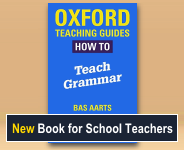Topic: Grammar in context
These pages explore methods and principles for teaching grammar in context.
Englicious contains many resources for English language in schools, but the vast majority of them require you to register and log in first. For more information, see What is Englicious?

